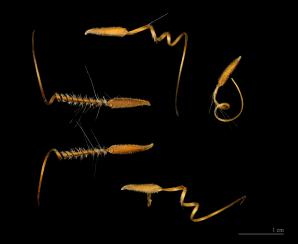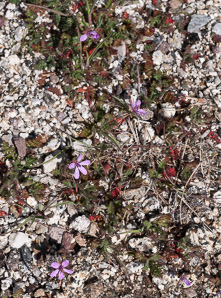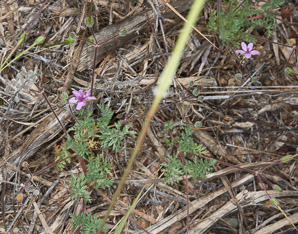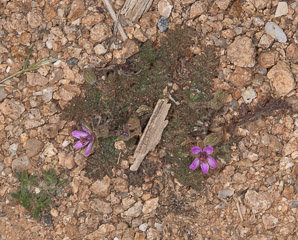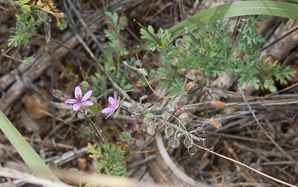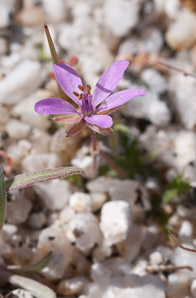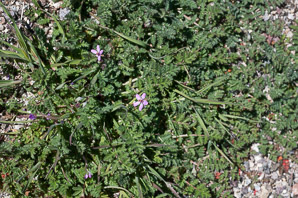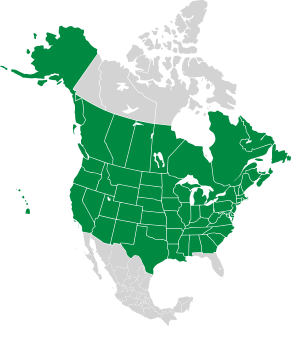
|
Erodium cicutarium (L.) L’Hér. ex Aiton Storksbill, filaree, redstem, redstem stork’s bill, pinweed, cutleaf filaree, pinclover, pingrass, heronbill
Redstem stork’s bill is an annual plant found darned near everywhere, except extreme northern and southern latitiudes. It is common in Eurasia, North and South America, central and southern Africa, Australia and New Zealand, and Tasmania. It is naturalized in North America, having been introduced in the eighteenth century. Storksbill is tolerant of both wet and dry habitats. It is aggressive, and considered invasive in some areas. Plants: Plants are often low and matted, but flowering stems range from 1¾-31″ (5-80 cm) in length, and are hairy and sticky. Leaves: Leaves are basal, barely above ground level. They are opposite, and divided into 9-13 leaflets, each further divided, resembling small ferns. They are 1-4″ (3-10 cm) long, and hairy and sticky. Flowers: Each flower is pink to lilac in color, and about ½″ (1.5 cm) in diameter, comprised of five petals, five sepals, ten stamens, one pistil, and five styles. Flowers appear almost year-round, depending upon location. Achenes of common stork’s-bill, by Didier Descouens. Fruits: “Stork’s bill” derives from the shape of the achenes (seed pods), which are long and tapered when they form, concealing developing corkscrews, marvelously clever devices. Like many achenes, their small hairs make them effective at hitching rides on passers-by. More interesting is that the coiled springs can launch seeds, tiny aerodynamic projectiles, a considerable distance from the plant. But their most remarkable ability, possibly unique, is that they can drill themselves into the ground! Stephano Mancuso describes this process in The Evolutionary Genius of Plants: A New Understanding of Plant Intelligence and Behavior: Once on the ground, a new adventure begins. The long bristlelike appendage of the seeds known as the awn (which closely resembles sperm) begins to curl up in reaction to the humidity in the air. The bristles help it to move, and as soon as the seed finds a small slit in the soil, they help move it into exactly the right position with its tip pointing down. At that point, with the spiked apex having been introduced into the slit, the coils caused by the humidity variation between day and night provide the necessary driving force to penetrate the soil. Each winding of the coil making up the awn propels the seed deeper. Furthermore, the shape of the tip ensures that the motion of penetration remains constant, both when the coil winds and when it unwinds. In a matter of days—that is, a few day/night cycles—the seed reaches its final position, many centimeters deep, ready to germinate and develop into a new plant. Edibility: Plants are edible, with a taste reminiscent of parsley, though more bitter, and the pink flowers produce nectar for honey. Online References:
The USDA Forest Service's Fire Effects Information Database The United States National Parks Service References:
2/28/2010 · Anza-Borrego Desert State Park, California · ≈ 6 × 9″ (15 × 23 cm)
Erodium cicutarium description by Thomas H. Kent, last updated 13 Oct 2020. © FloraFinder.org. All rights reserved. |
8/28/2014 · High Road to Taos, New Mexico · ≈ 6 × 9″ (16 × 23 cm) 4/30/2018 · Kelbaker Road, Mojave National Preserve, California · ≈ 7 × 4½″ (18 × 12 cm) 8/28/2014 · High Road to Taos, New Mexico · ≈ 5 × 8″ (13 × 19 cm) 2/28/2010 · Anza-Borrego Desert State Park, California · ≈ 4½ × 3″ (11 × 7.9 cm) 2/28/2010 · Anza-Borrego Desert State Park, California · ≈ 11 × 7″ (27 × 18 cm) 5/3/2018 · Park Blvd., Joshua Tree National Park, California · ≈ 5 × 8″ (13 × 20 cm) Range:
|
